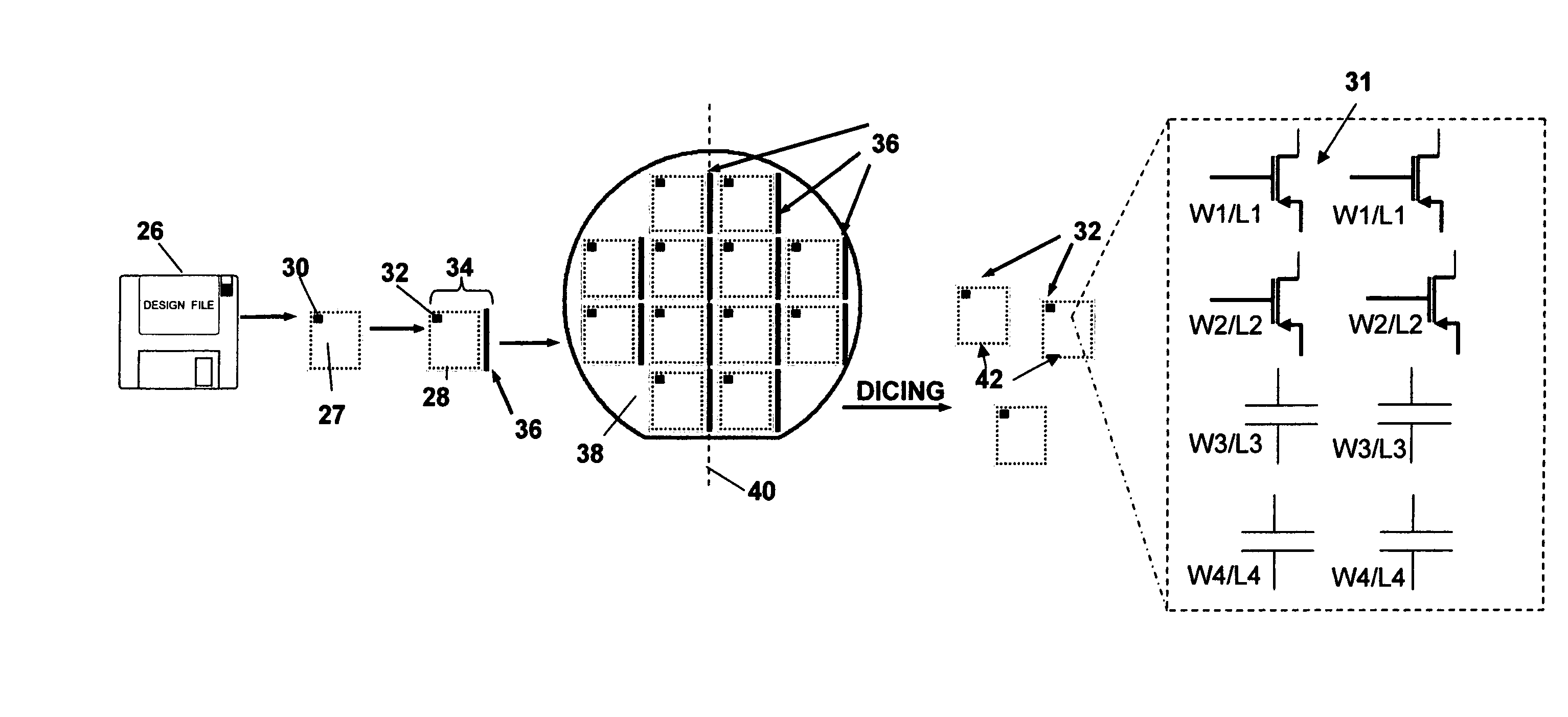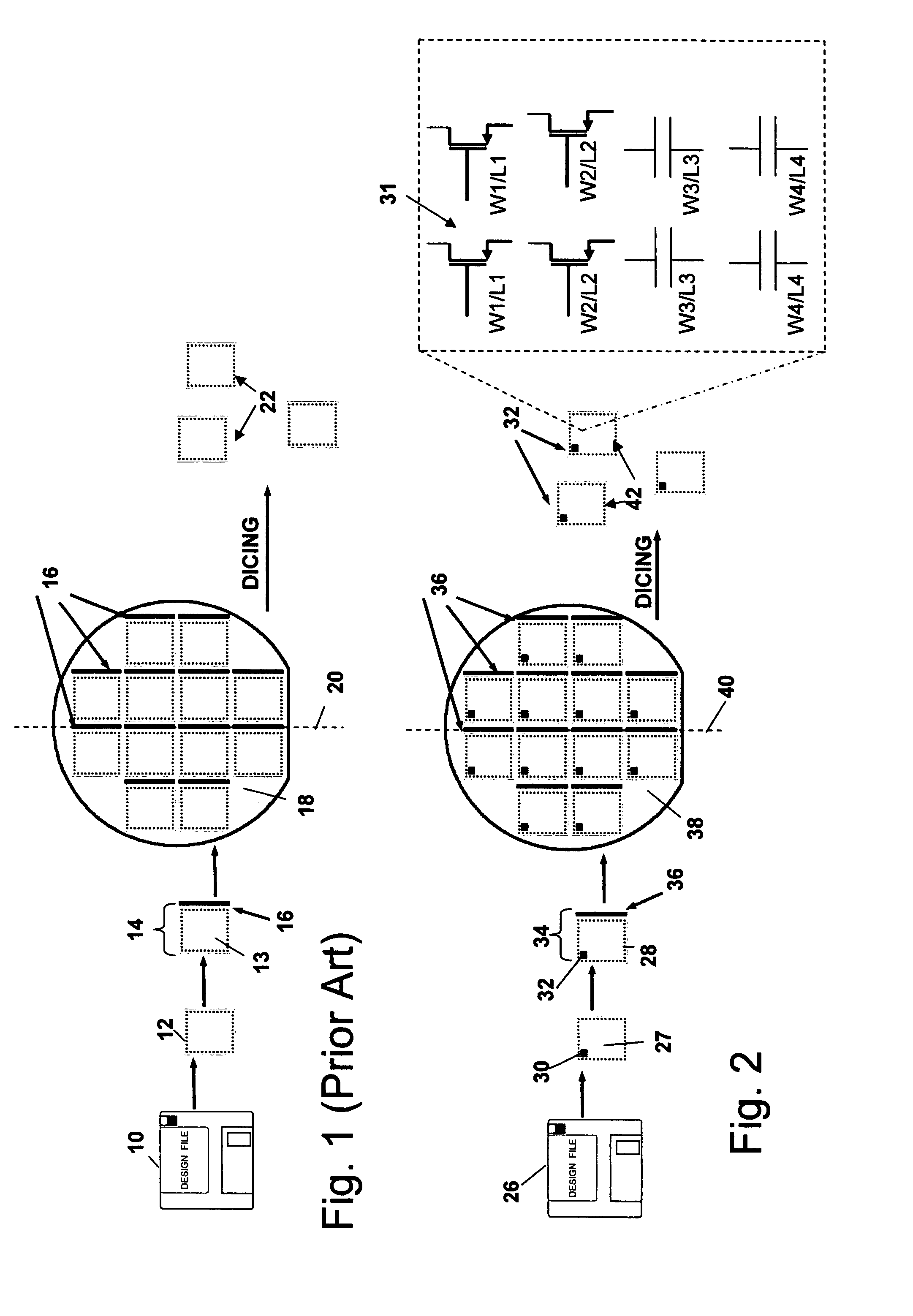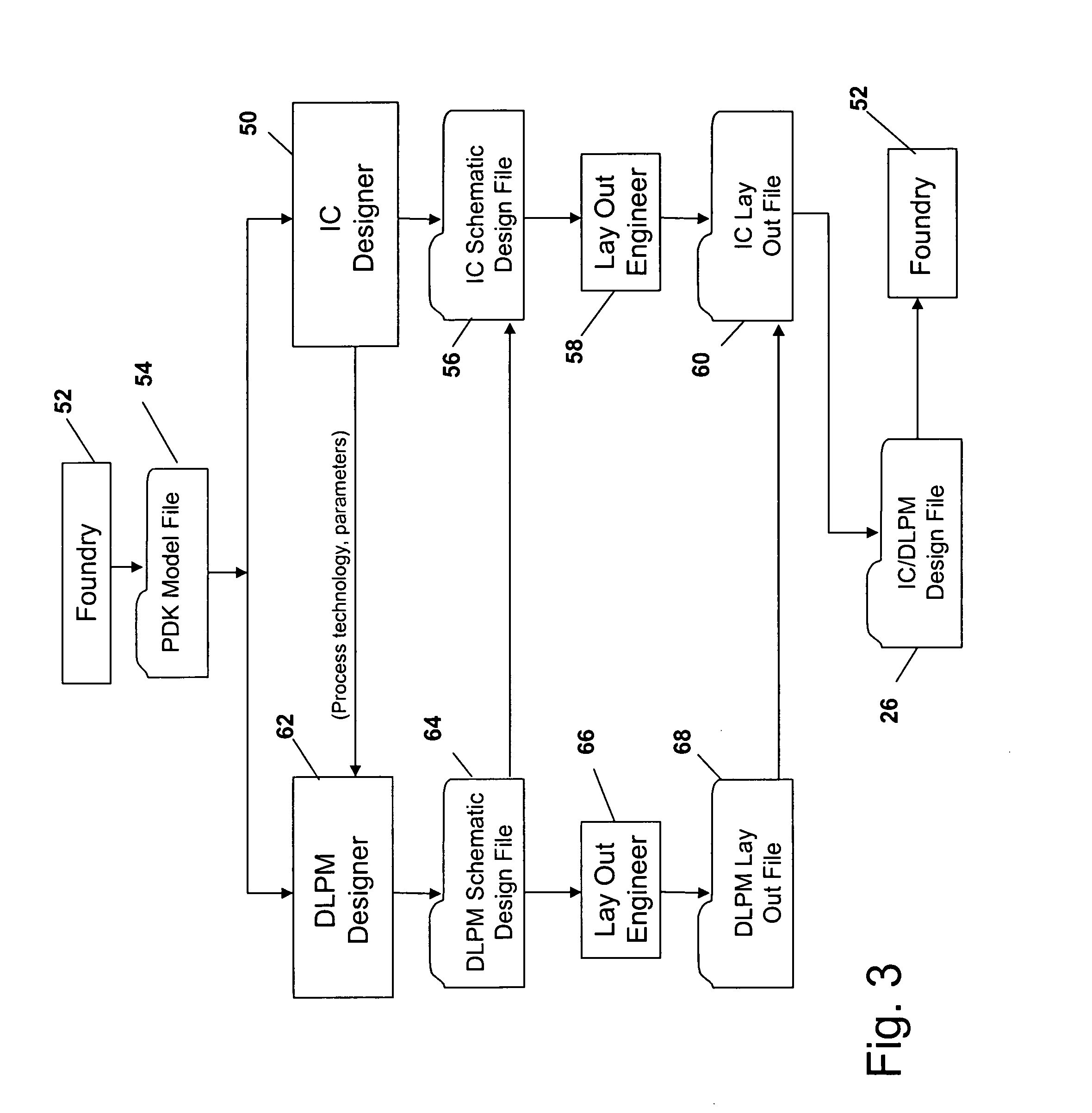Die-level process monitor and method
a process monitor and die-level technology, applied in semiconductor/solid-state device testing/measurement, semiconductor/solid-state device details, instruments, etc., can solve the problems of large area of silicon wafers, devoted test, and inability to ship out dies as products to customers, etc., to reduce the footprint of dlpm, reduce the size of the package, and reduce the area available for i
- Summary
- Abstract
- Description
- Claims
- Application Information
AI Technical Summary
Benefits of technology
Problems solved by technology
Method used
Image
Examples
Embodiment Construction
[0025]The present invention provides a die-level process monitor (DLPM) to verify whether semiconductor processing-related parameters are within specified design limits and to accumulate statistics thereof. A process monitor small enough to be implemented at the die level is instrumental to determine root causes of circuit malfunctions and reliability issues. The DLPM will aid process and circuit engineers to extract both process parameters (transistor threshold voltage, resistance, capacitance and inductance, transconductance, output conductance) and respective statistical variations. The DLPM may also be used by the IC to adjust bias conditions based on feedback from the DLPM.
[0026]Semiconductor die contain an integrated circuit that performs an electronic function. Although thousands of electronic devices compose the IC, a large portion of this quantity is made up of identical devices. These devices are necessarily designed identically to ensure desired circuit performance. Due t...
PUM
 Login to View More
Login to View More Abstract
Description
Claims
Application Information
 Login to View More
Login to View More - R&D
- Intellectual Property
- Life Sciences
- Materials
- Tech Scout
- Unparalleled Data Quality
- Higher Quality Content
- 60% Fewer Hallucinations
Browse by: Latest US Patents, China's latest patents, Technical Efficacy Thesaurus, Application Domain, Technology Topic, Popular Technical Reports.
© 2025 PatSnap. All rights reserved.Legal|Privacy policy|Modern Slavery Act Transparency Statement|Sitemap|About US| Contact US: help@patsnap.com



